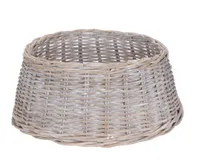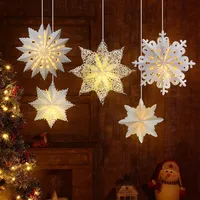These 10 foolproof rules will help you host Christmas in a small space
If you're faced with hosting a Christmas in a small home, fear-not, we've got the expert advice to see you through the season

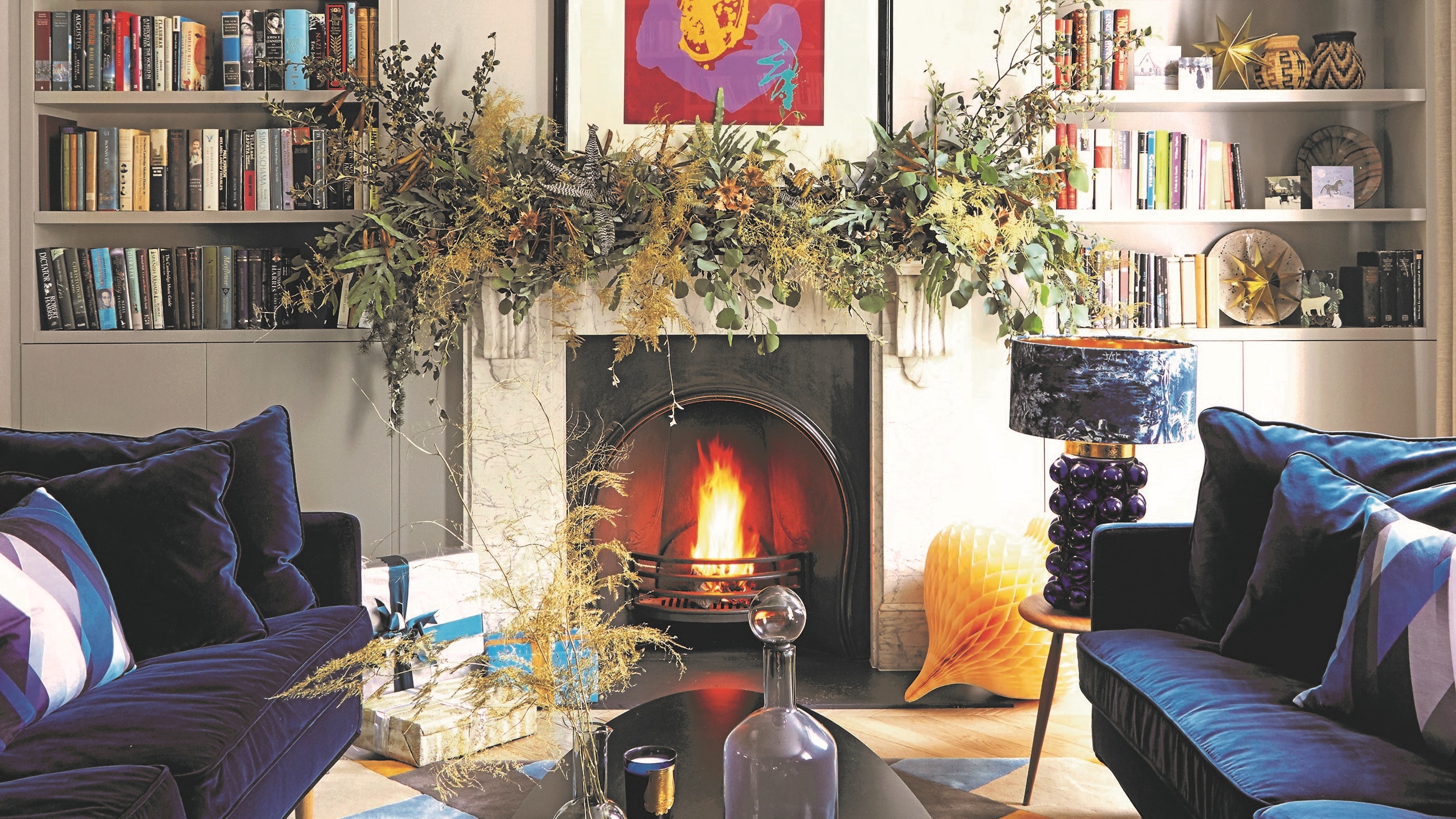
Christmas in a small space can be quite a challenge. Creating a joyous and festive atmosphere is the number one priority, but when you're confined to a small space, the mood might feel more cramped and cluttered, stopping your home from reaching its full festive potential.
When you've got to make way for a Christmas tree and seat more numbers than you're used to, it's all too easy to end up with grandma sitting on an ice box. But there are some really simple foolproof rules, from Christmas decorating to hosting, you can follow to make the whole day go seamlessly. Read on for our top tips.
1. Carefully consider the placement of your Christmas tree

First and foremost, think about the placement of your tree. Sure, it adds a bit of festive magic to your home, but it's not the most convenient of festive essentials - taking up a whole lot of space that you might not have. Be careful about putting it next to any heat sources, but try and stick to a corner, and think about where it won't take up as much space. If you want to go taller with your tree, bear in mind that this most likely means it will be wider, protruding into your room where you might plan on using space for hosting. Your best bet is to go for a small Christmas tree, and if that means it's spindly, think outside the box about how you can make a Christmas tree look fuller. Alternatively, a couple of smaller trees dotted around instead, so you're not skimping on Christmas joy, but being more realistic about what space you have.
Get around the problem by giving your tree some height. A stand is a good idea, and you can cover it with its own Christmas tree skirt. If you don't have one, a small coffee table can act like a pedestal, or even an upturned wicker basket elevating the tree without hindering your walkway, just make sure to disguise it with gifts at the base of the tree.
A clever way to disguise the stand or the base you have put your tree on, reducing visual clutter in your small space.
2. Redefine how you use spaces
Sometimes, it might be as simple as rethinking what spaces you use for what. Your living room might be best placed for hosting dinner and have the length for a long table, while a traditional dining area might turn into a spot for a buffet station or mini-bar, hosting your guests for drinks and nibbles. Don't be afraid to going diagonal with the dining table either, it might feel at odds with what you're used to but can help you squeeze more people in.
Try and clear the area and move large and obstructive pieces of furniture around - you might want to think about 'floating' furniture, giving people a walkway while keeping space for entertaining. Play with the scheme and see if it opens up extra possibilities that you might not have initially thought of.
3. Try and invest in furniture with dual purpose
'My top tip is being open-minded about multi-purpose furniture,' says Jade Diamond-Haggert of The Stylesmiths. 'Ottomans, stools, steps, etc make for easy backless seats, and even floor pillows can be good alternatives to more formal seating arrangements.' Think about how furniture can turn into something else. That kitchen counter could evolve into a bar zone, and a dining room buffet table is great for storage and hosting at the same time. That bench might be a good place for wine storage underneath, while that unused coffee table might become a mini-bar in the living room. Try and look at every piece of furniture in the room and think how you can subtly store or use it for something else.
The Livingetc newsletters are your inside source for what’s shaping interiors now - and what’s next. Discover trend forecasts, smart style ideas, and curated shopping inspiration that brings design to life. Subscribe today and stay ahead of the curve.
These little tables are super cute. Use them as coffee tables throughout the year, then whip them out for hosting where they make great spots to place platters and serve drinks from.
4. Think about the dining table shape
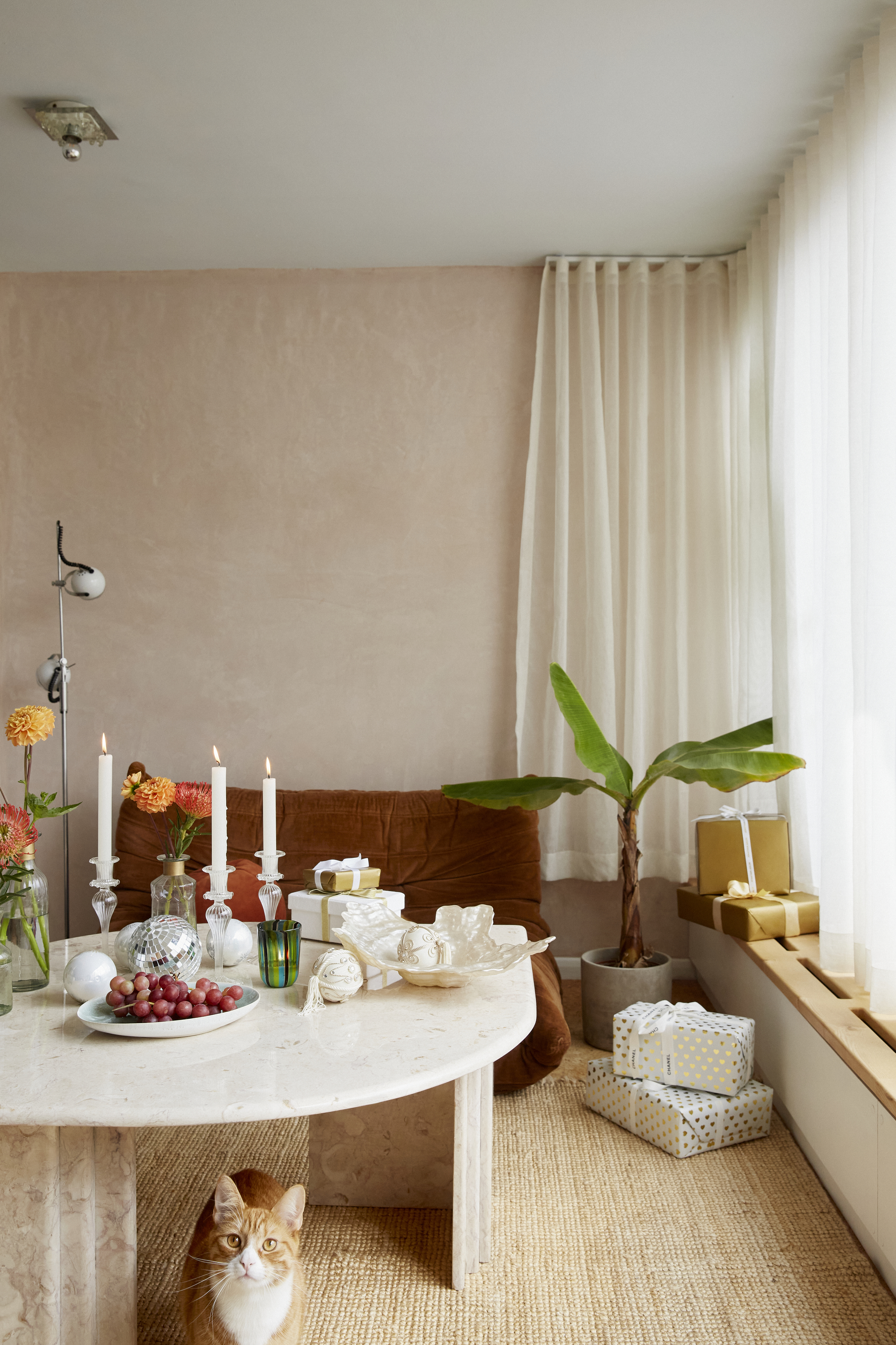
It all comes down to the dining table size and shape. A dining table that pulls out to sit more people, but one that you can fold away at the close of the day is one of the best investments you can make if you have a small space but are faced with the mammoth task of hosting for Christmas day. The simple-to-use extension mechanism is a thoughtful design detail that will ensure you can add extra seating in a dining room.
Alternatively, in terms of shape, round or oval are ideal tabletop ideas for social gatherings. There is no head of the table - great for entertaining, they soften the room, and the lack of sharp corners mean you can fit in a much larger table to a tighter room than you’d expect. Square and rectangle are the most common tabletop shapes, so you may find more choice out there, but if you go rectangular, ensure that the width is no narrower than 36" to give everyone enough space.
5. And factor in space around the table
Always keep at least 23" minimum space around your dining table. You need your dining table to be able to breathe and have its own dedicated space, so measure your room and have these dimensions in your head when shopping for your dream table. ‘This space also allows room for chairs to slide out so no one feels squeezed in and guests can move around easily,’ says Rachel Galbraith, creative director at furniture brand, Ercol. Think about height too. ‘Table height should measure anything between 29 1/2" - 31 1/2" - the standard height of most dining tables for everyone to sit comfortably,’ says Pernille Lind, co-founder of furniture design studio, Lind + Almond.
Finally, be resourceful. 'It's unlikely that a small home will have a 10-seater dining table, but you can look at buying a piece of plywood to sit on top of your existing table to extend its use,' says Jade Diamond-Haggert of The Stylesmiths. 'Throw on a beautiful table cloth, some simple decor and delicious food and no one will know the difference.'
6. Keep the decor uncluttered
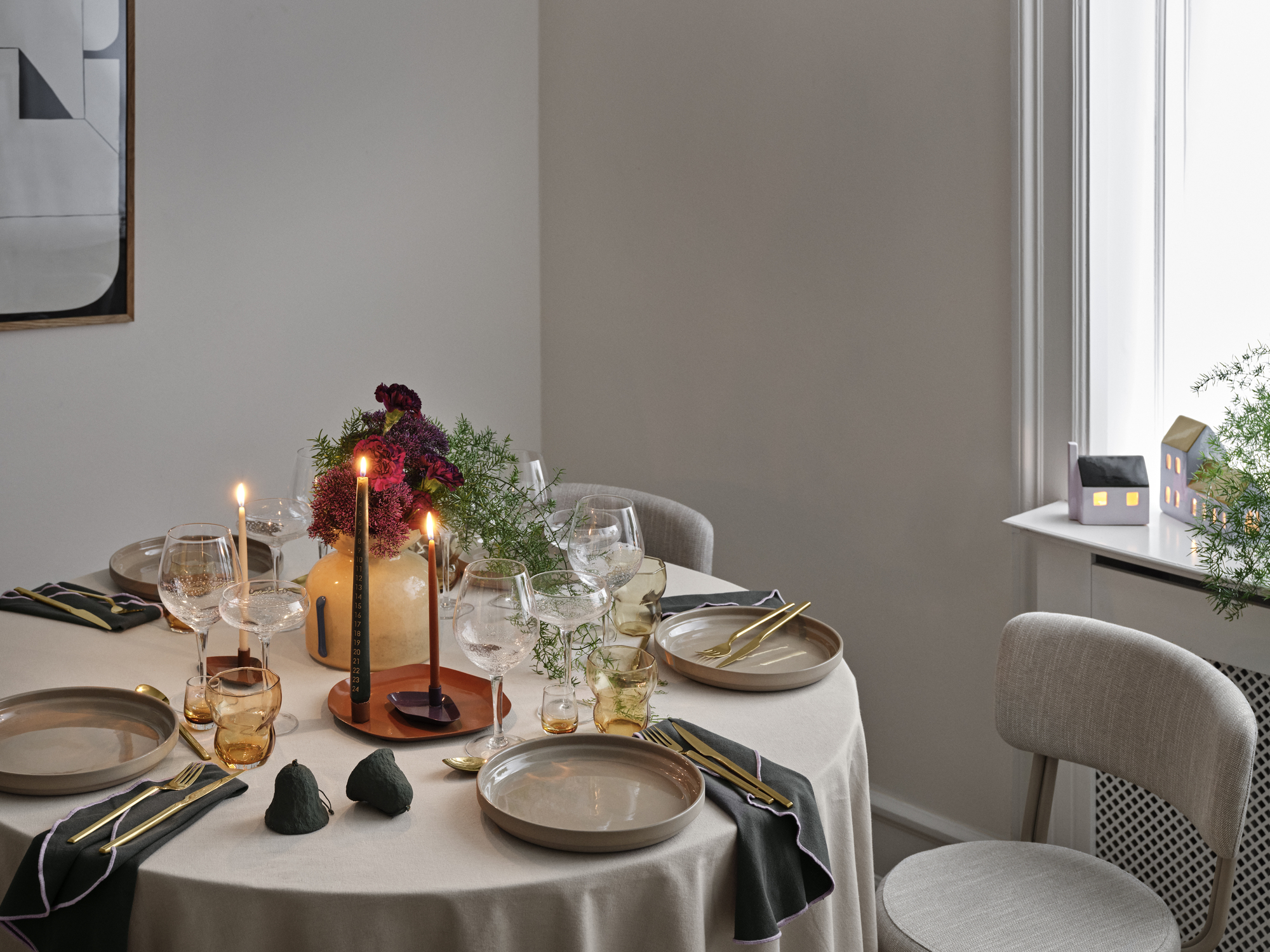
It's Christmas, so we can't blame you if you're tempted to go overboard with the festive decor, with paper chains hanging from the ceiling, branch chandeliers, and tinsel hanging from the ceiling. But going all out can make your already small space feel cramped and claustrophobic. Instead, opt for a simple scheme. Go cohesive too - paper snowflakes that are all one color are a nice way to introduce a classy take of decor, but avoiding the classic red and green combination means you can keep things relatively minimalist and stop the space from feeling like a visual overload. Why not go foraging for a few sprigs of holly and garlands of ivy and let them elegantly hang from behind a framed piece of art, or on a mantelpiece? Just a few pieces will do to establish the theme.
This applies to your Christmas tablescape too, try not to laden every slither of space with decor, and keep things pared back. Think subtle and the feeling of space will follow.
Consider going for a simple, all-white scheme to keep your decor visually uncluttered. These sweet snowflakes give a nice nod to the festivities without being too overwhelming, perfect for a small space.
7. Keep the space well lit
Lighting is key to establishing a mood, and if you're struggling to get the balance between a feeling of space, and creating an atmosphere, take a step back and start from scratch. You might find you're able to use the size in your favor to make the room feel cozy with the right lighting. Every scheme needs ceiling light, and in small spaces, recessed spotlights are a good foundation. Whether they are inbuilt or sit flush on the ceiling, they take up very little space but can provide a great amount of downlight. You want these to be linked to a dimmer switch, so if you're sat down for an evening Christmas meal they aren't too blinding, but keep them well spaced apart. 'Space them evenly around the room making sure that the beam spread of each light overlaps,' suggests Libby Rawers of Sharp + Grey Interiors. You also want to avoid placing your recessed lights in rows, this can look rigid.
Track lighting can be a good idea for a small space where you'll be hosting too, as you can easily move around the individual light so it shines on a particular area. You might want to illuminate certain parts of the room like the dining table if this is the case.
Lastly, keep the table well-lit, this is the focus of the room and distracts guests from how small the space is. Candles are always good, but if you want to take up as little space as possible, go for small tealights dotted around the table (in jars to avoid any hazards when someone is reaching for the cranberry sauce), and avoid long taper candles which might be too tall for a small room.
8. Zone the areas
Entertaining around Christmas usually comes with different chapters of the night. You might welcome guests with a drink and canape, followed by general merriment and catching up before sitting down to dine, then retiring to a comfier area to lounge, maybe by an open fireplace. But the problem with small spaces is that you might not have all these different rooms to distinguish each section of the night. Your welcome drinks, dining and lounging areas might just be one room - so think carefully about how you can distinguish and zone the areas you do have.
If you have one large open floor plan, it's all about the way you divide it up with furniture. A corner of a small open-plan room might lend itself to an L-shape sofa that creates a snug little corner. Pop a rug in the center and it's its own little room within a larger space.
Think how you can apply this zoning idea to the dining area too - maybe it's a bookshelf that sits inbetween the dining table and the rest of the space and acts like a fake wall. Keep it decorated nicely with books and plants. Sometimes it's as simple as using the backs of your sofas to create a zone within a room - you might be surprised by the results.
9. Establish a coat room
This doesn't necessarily need to be a room, but a location for coats and bags to go is a great rule for small space hosting. The entryway might be too small a space for all the coats, scarves and bags - especially in the winter - when they are typically big bulky items. If everyone brings them into your hosting space you'll be fighting for space among the clothing, not to mention the fact that it will ruin the festive aesthetic. Even if it's a matter of throwing coats onto your bed, if they're out of sight, they're out of mind and the space will look far more elegant and refined for it.
10. Open the back doors

OK, it might be cold out, but if space is at a premium but you have some garden room, try and cozy up the space with some outdoor fairy lights, blankets or even a chimenea to make it a nice extra spot for guests to mingle. 'In a small space you don't want your guests feeling squished like sardines,' says Jade, 'although a crowded space does often make for a lively atmosphere, making use of any outdoor areas, even if its just a small backyard, can spread out the party while allowing for some extra ventilation.'

Former content editor at Livingetc.com, Oonagh is an expert at spotting the interior trends that are making waves in the design world. She has written a mix of everything from home tours to news, long-form features to design idea pieces, as well as having frequently been featured in the monthly print magazine. She is the go-to for design advice in the home. Previously, she worked on a London property title, producing long-read interiors features, style pages and conducting interviews with a range of famous faces from the UK interiors scene, from Kit Kemp to Robert Kime. In doing so, she has developed a keen interest in London's historical architecture and the city's distinct tastemakers paving the way in the world of interiors.
